Gothic symbolism has captivated minds for centuries, weaving ancient mysteries into modern culture with undeniable power. These enigmatic symbols transcend mere fashion statements, carrying profound spiritual significance from ancient Egyptian traditions, occult practices, and mystical wisdom. From the timeless ankh to the protective pentagram, goth symbols connect contemporary practitioners with millennia of sacred knowledge and rebellious expression.
Dark symbolism speaks to those who embrace life’s deeper mysteries and aren’t afraid to explore shadowy realms of meaning. Whether adorning gothic jewelry, inspiring tattoo art, or guiding spiritual practices, these powerful emblems offer both aesthetic beauty and transformative energy. This comprehensive journey through 25+ essential gothic symbols will unveil their hidden meanings, cultural significance, and enduring influence on modern alternative culture, revealing why these ancient marks continue to fascinate millions worldwide.
Goth symbols represent much more than dark aesthetics. They carry deep spiritual meanings from Neopagan traditions, Christian iconography, and alchemical symbols. Modern gothic subculture members use these powerful symbols to express their beliefs, find protection, and connect with ancient wisdom. This comprehensive guide will reveal the hidden meanings behind 25+ essential dark symbolism icons that shape gothic fashion and alternative fashion today.
Ancient Egyptian and Mystical Goth Symbols
Ancient Egyptian symbolism dominates gothic fashion because these symbols embody eternal mysteries. The ancient Egyptians understood death and rebirth better than any other culture. Their sacred symbols carried profound spiritual significance that transcends time. These Egyptian symbols appear on everything from jewelry to tattoos in modern gothic subculture.
From pharaohs’ tombs to contemporary goth symbols, these occult symbols bridge thousands of years of mystical traditions. Siouxsie Sioux and other gothic icons popularized Egyptian-inspired dark makeup and Egyptian eye makeup in the 1980s. Today’s gothic enthusiasts continue this tradition by incorporating these powerful symbols into their black clothing and jewelry design.
1. Ankh: The Key of Life in Gothic Fashion

The ankh represents eternal life and divine power in ancient Egyptian culture. This cross-like symbol with a loop at the top appears frequently in gothic jewelry and tattoo symbolism. The falcon-headed god Horus often holds the ankh, showing its connection to divine authority.
Gothic fashion enthusiasts embrace the ankh because it represents the balance between life and death. Neil Gaiman’s Sandman comics popularized the ankh in 1990s gothic culture. The symbol’s ancient power appeals to those seeking spiritual protection and connection to arcane knowledge.
2. Eye of Horus: Protection and Third Eye Awakening

The Eye of Horus serves as a powerful protective amulet in both ancient and modern contexts. This wedjat eye symbol represents the falcon-headed god’s watchful protection. Ancient Egyptians believed it could ward off evil and provide spiritual insight.
Siouxsie Sioux made the Eye of Horus famous with her iconic Egyptian eye makeup style. Modern gothic practitioners use this symbol for third eye awakening and mystical protection. The symbol appears in gothic jewelry designs and alternative fashion accessories worldwide.
3. Eye of Ra: Solar Power and Divine Judgment

The Eye of Ra represents the sun god’s divine feminine power and judgment. This right eye symbol carries sacred energy associated with protection and wrath. Ancient texts describe it as a powerful force that destroys enemies of the gods.
Gothic subculture members appreciate the Eye of Ra’s connection to divine feminine energy. The symbol represents both protective power and destructive capability. Many Neopagan traditions incorporate this symbol into spiritual practices focused on justice and empowerment.
4. Ouroboros: The Eternal Cycle of Death and Rebirth

The Ouroboros shows a serpent eating its own tail, representing eternal cycles. This alchemical symbol appears in ancient Egyptian texts and medieval occult manuscripts. It symbolizes the endless cycle of creation, destruction, and renewal.
Dark symbolism enthusiasts love the Ouroboros because it represents transformation and infinity. The symbol appears in gothic jewelry, tattoos, and alternative fashion designs. Aleister Crowley and other occultism practitioners used this symbol in their magical work.
5. Scarab Beetle: Transformation and Resurrection

The scarab beetle symbolizes transformation and resurrection in Egyptian symbols. Ancient Egyptians observed how beetles emerged from dung balls, seeing this as a symbol of rebirth. They placed scarab protective amulets in tombs to ensure safe passage to the afterlife.
Gothic fashion incorporates scarab imagery to represent personal transformation. The beetle’s metamorphosis mirrors the spiritual journey many gothic subculture members experience. This ancient symbol continues to inspire modern jewelry design and tattoo symbolism.
| Egyptian Symbol | Meaning | Modern Gothic Use |
|---|---|---|
| Ankh | Eternal life, divine power | Jewelry, tattoos, spiritual protection |
| Eye of Horus | Protection, third eye awakening | Makeup inspiration, protective amulets |
| Eye of Ra | Solar power, divine judgment | Feminine empowerment, justice symbols |
| Ouroboros | Eternal cycles, transformation | Infinity symbols, personal growth |
| Scarab Beetle | Resurrection, metamorphosis | Transformation jewelry, rebirth tattoos |
Christian and Religious Symbols Reimagined
Christian iconography takes on new meanings within gothic subculture. These religious symbols transform from sacred imagery into statements of rebellion and artistic expression. Gothic fashion practitioners often reclaim these symbols to make political statements or express complex relationships with spirituality.
Understanding the original meanings versus modern gothic interpretations reveals fascinating cultural dynamics. Some symbols maintain their protective qualities while gaining rebellious undertones. Others completely reverse their traditional meanings to challenge religious authority and social norms.
6. Inverted Cross: St. Peter’s Cross vs. Anti-Christian Symbol

The inverted cross originally honored Saint Peter, who requested crucifixion upside down because he felt unworthy to die like Christ. This Christian symbol appears in Catholic churches and papal imagery. However, modern culture often misinterprets it as an anti-Christian symbol.
Gothic subculture members use inverted crosses to make political statements about organized religion. Horror movies and satanic imagery popularized its rebellious associations. The symbol appears frequently in gothic jewelry and alternative fashion as a form of shock value expression.
7. Rosaries and Crucifixes in Gothic Fashion

Catholic rosaries and crucifixes appear throughout gothic fashion as aesthetic elements rather than religious tools. The ornate design of traditional Christian iconography appeals to gothic sensibilities. Madonna and other artists popularized religious jewelry in secular contexts during the 1980s.
Alternative fashion designers incorporate rosaries into black clothing and accessories for their visual impact. The contrast between sacred symbols and dark aesthetics creates compelling fashion statements. This appropriation reflects gothic subculture’s complex relationship with Christian traditions.
8. Leviathan Cross: The Satanic Cross and Sulfur Symbol

The Leviathan Cross combines an inverted cross with an infinity symbol, creating a distinctive satanic emblem. This alchemical symbol originally represented brimstone (sulfur) in medieval texts. Anton LaVey adopted it as the official symbol of the Church of Satan in the 1960s.
Occult symbols like the Leviathan Cross appeal to gothic practitioners interested in Satanism and dark spirituality. The symbol appears in gothic jewelry and tattoo symbolism among those exploring occult traditions. Its connection to sulfur links it to both alchemical practices and infernal imagery.
9. Chi Rho: Early Christian Symbolism in Dark Contexts

The Chi Rho monogram represents Christ’s name using Greek letters. Constantine saw this symbol in a vision before his victory at the Battle of Milvian Bridge. Early Christians used it as a secret identification symbol during periods of persecution.
Gothic artists sometimes incorporate the Chi Rho into dark artistic contexts, subverting its traditional meaning. The symbol’s ancient origins and historical significance appeal to those interested in Christian symbolism beyond mainstream interpretations. Renaissance art frequently featured this monogram in religious paintings.
10. Sacred Heart: Love, Suffering, and Devotion

The Sacred Heart represents Christ’s divine love and suffering in Catholic tradition. This symbol combines a heart with flames, thorns, and sometimes a cross. Caravaggio and other artists depicted the Sacred Heart in dramatic, emotionally intense paintings.
Gothic fashion embraces the Sacred Heart’s imagery of beautiful suffering and passionate devotion. The symbol’s combination of love and pain resonates with romantic gothic themes. Tattoo symbolism often features ornate Sacred Heart designs that blend religious and dark aesthetic elements.
Occult and Esoteric Power Symbols
Esoteric traditions provide goth symbols with their deepest mystical significance. These occult symbols channel supernatural energies and arcane knowledge from ancient wisdom traditions. Aleister Crowley, Madame Blavatsky, and other occultism pioneers popularized many of these symbols in modern spiritual practices.
Contemporary gothic practitioners embrace these powerful symbols for protection, manifestation, and spiritual connection. Occult traditions offer alternative spirituality paths that align with gothic subculture values of individualism and mysticism. These symbols appear in gothic jewelry, tattoo symbolism, and ritual practices worldwide.
11. Pentacle vs Pentagram: Five-Pointed Star Meanings
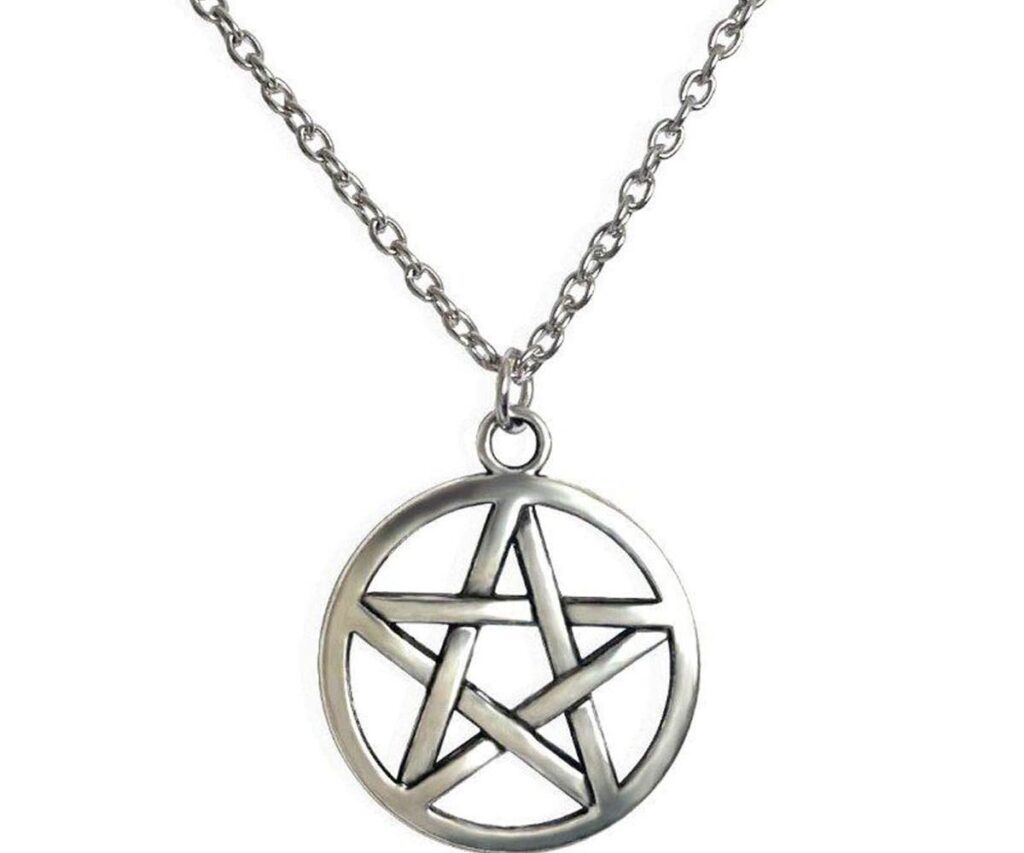
The pentagram consists of a five-pointed star, while the pentacle includes the star within a protective circle. Wicca practitioners use the upright pentacle to represent the five elements: earth, air, fire, water, and spirit. The circle provides spiritual protection during ritual work.
Ancient civilizations used five-pointed stars in religious contexts long before modern occult adoption. Babylonian folklore associated the symbol with the goddess Ishtar. Gothic practitioners often wear pentacle jewelry for protection and to identify with Neopagan traditions.
12. Hexagram (Seal of Solomon): Six-Pointed Star Power
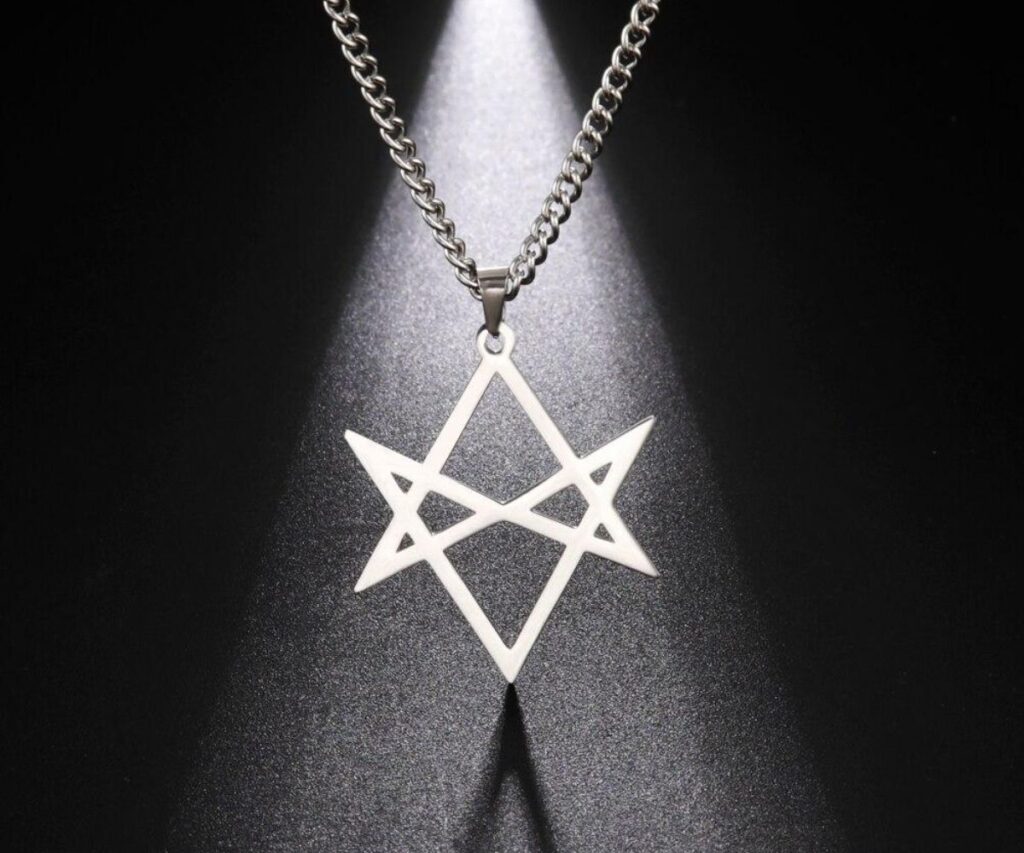
The hexagram or Seal of Solomon represents divine balance and magical protection. Jewish folklore describes King Solomon using this symbol to command demons and spirits. Medieval occults adopted it for protective magic and spiritual binding work.
Alchemical traditions use the hexagram to represent the union of opposites – fire and water, masculine and feminine. Gothic occult practitioners appreciate its protective qualities and connection to ancient magical traditions. The symbol appears in gothic jewelry and ritual implements.
13. Sigil of Lilith: The Dark Feminine Divine
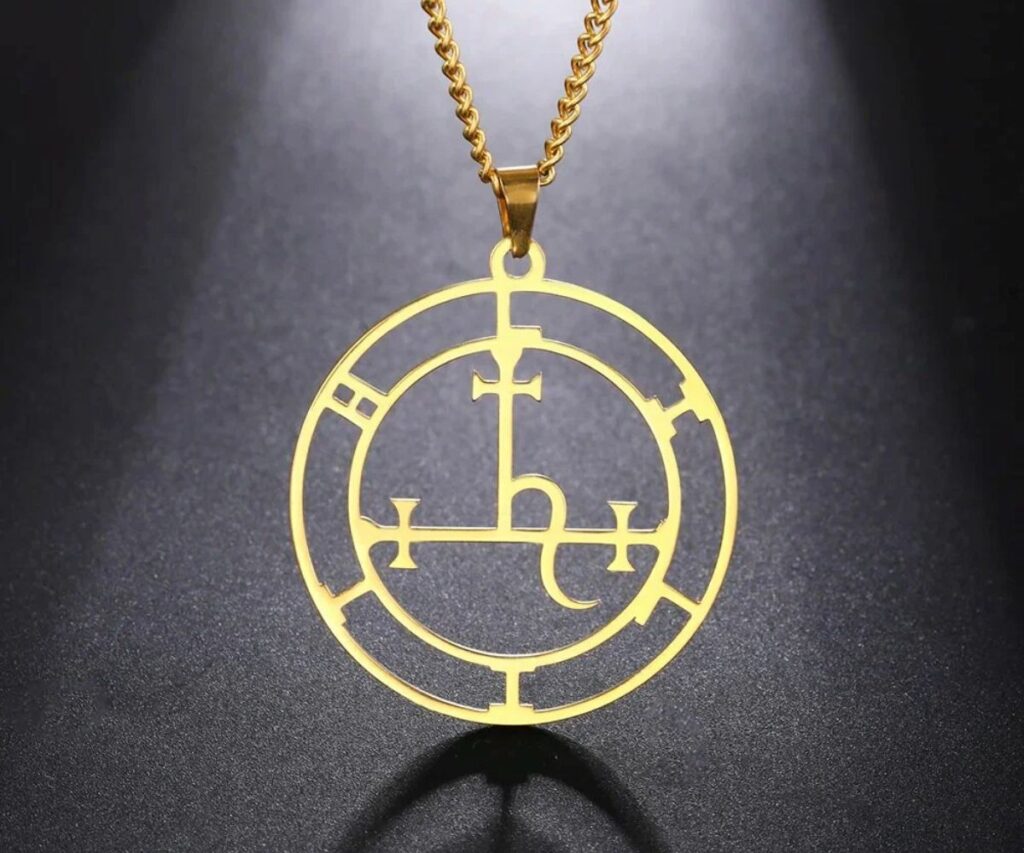
Lilith’s sigil represents the dark feminine and women’s empowerment in occult traditions. Jewish folklore describes Lilith as Adam’s first wife who refused to submit to male authority. She left the Garden of Eden to become a powerful demonic figure.
Modern feminist spirituality reclaims Lilith as a symbol of feminine independence and power. Gothic women often connect with Lilith’s rebellious energy and refusal to conform. The sigil appears in gothic jewelry and tattoo symbolism as a symbol of feminine strength.
14. Baphomet: From Templar Accusations to Modern Occultism
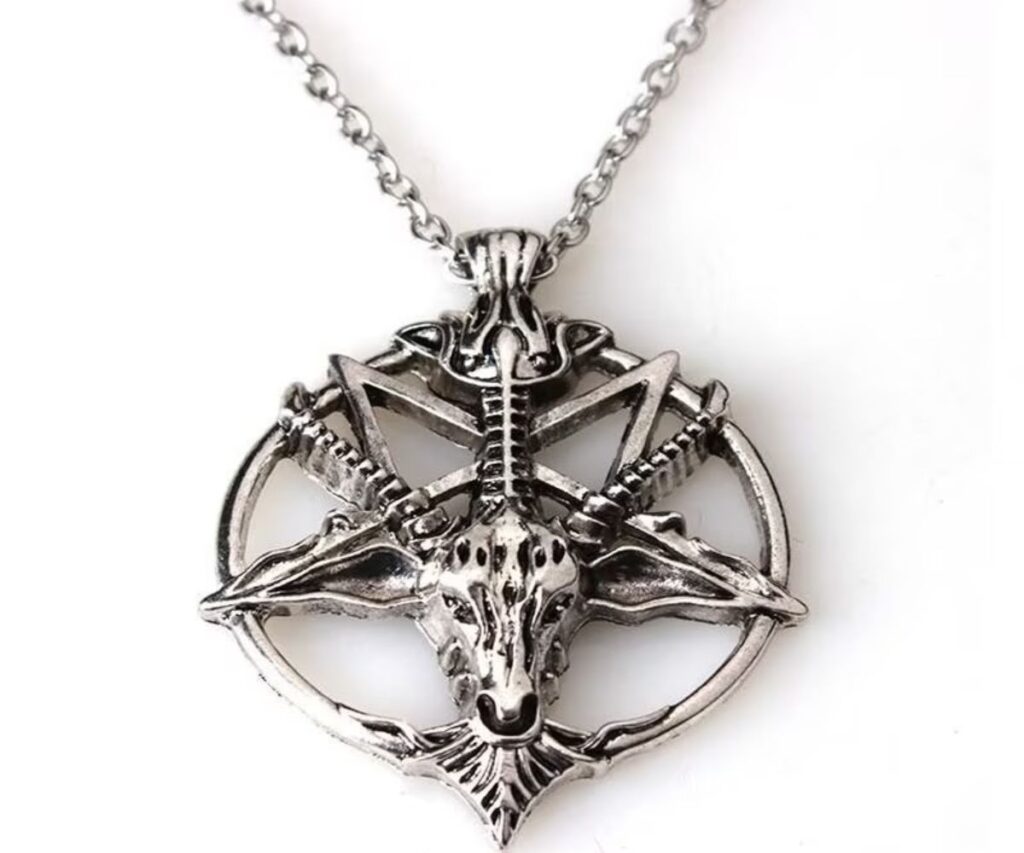
Baphomet originated from accusations against the Knights Templar in medieval times. Éliphas Lévi created the famous goat-headed imagery in the 19th century, representing cosmic balance and mystical wisdom. The figure combines masculine and feminine, human and animal, light and dark elements.
Modern occultism embraces Baphomet as a symbol of balance and spiritual enlightenment. The Satanic Temple uses Baphomet imagery to represent knowledge and individual freedom. Gothic practitioners appreciate its androgynous symbolism and connection to arcane wisdom traditions.
15. Sigil of Lucifer: The Light Bearer’s Mark
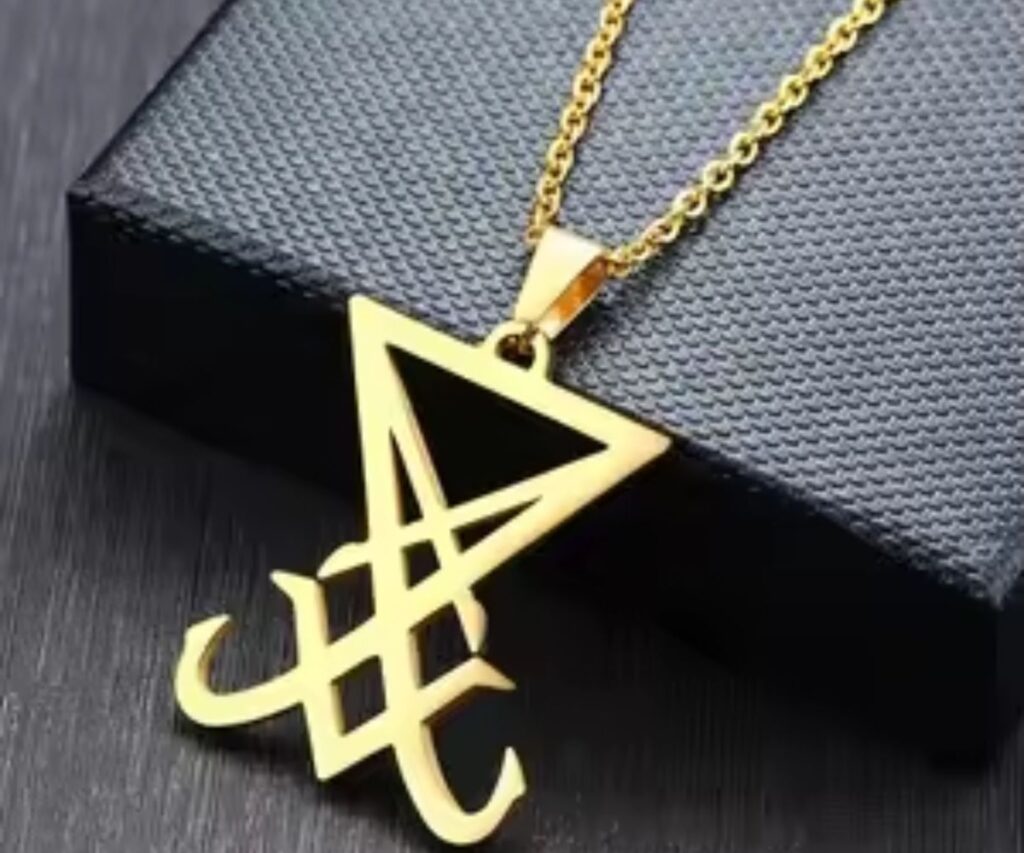
Lucifer’s sigil represents the light-bearer and intellectual freedom in occult symbolism. The name Lucifer originally meant morning star, referring to the planet Venus. Milton’s Paradise Lost popularized the rebellious angel interpretation that influences modern usage.
Gothic spirituality often embraces Luciferian symbolism as representing knowledge, enlightenment, and rebellion against oppressive authority. The sigil appears in gothic jewelry and occult artwork. Led Zeppelin and other musicians incorporated Luciferian imagery into their artistic work.
| Occult Symbol | Original Meaning | Gothic Interpretation |
|---|---|---|
| Pentacle | Five elements, protection | Wiccan identity, spiritual protection |
| Hexagram | Solomon’s seal, divine balance | Magical protection, ancient wisdom |
| Sigil of Lilith | Dark feminine, independence | Women’s empowerment, rebellion |
| Baphomet | Cosmic balance, wisdom | Spiritual enlightenment, individuality |
| Sigil of Lucifer | Light-bearer, knowledge | Intellectual freedom, anti-authority |
Pagan and Witchcraft Symbols
Ancient pagan symbols experience renewed popularity through modern witchcraft and gothic spirituality. These earth-based traditions offer alternative spiritual paths that emphasize personal empowerment and connection to natural cycles. Neopagan traditions blend historical symbolism with contemporary spiritual practices.
Contemporary practitioners combine historical witchcraft symbols with gothic aesthetics to create powerful personal talismans. Wicca, Norse traditions, and Celtic symbolism contribute to modern pagan revival movements. These symbols appear in gothic jewelry, tattoo symbolism, and ritual practices.
16. Triple Goddess Symbol: Maiden, Mother, Crone
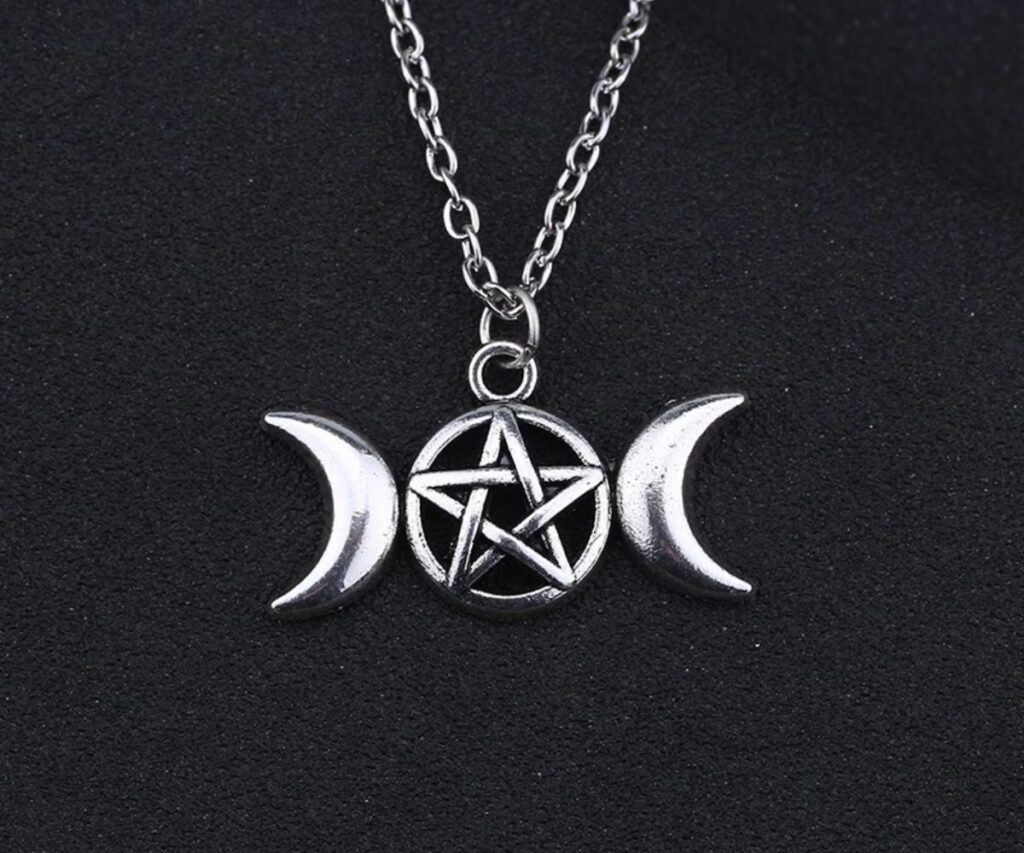
The Triple Goddess symbol represents the three life stages of divine feminine energy. The maiden symbolizes new beginnings and potential. The mother represents fertility and creative power. The crone embodies wisdom and transformation.
Moon phases correspond to these three aspects – waxing, full, and waning. Wicca practitioners honor the Triple Goddess in ritual work and spiritual practice. Gothic women connect with this symbol’s empowerment of feminine wisdom and mystical power.
17. Triquetra: Celtic Trinity and Triple Moon
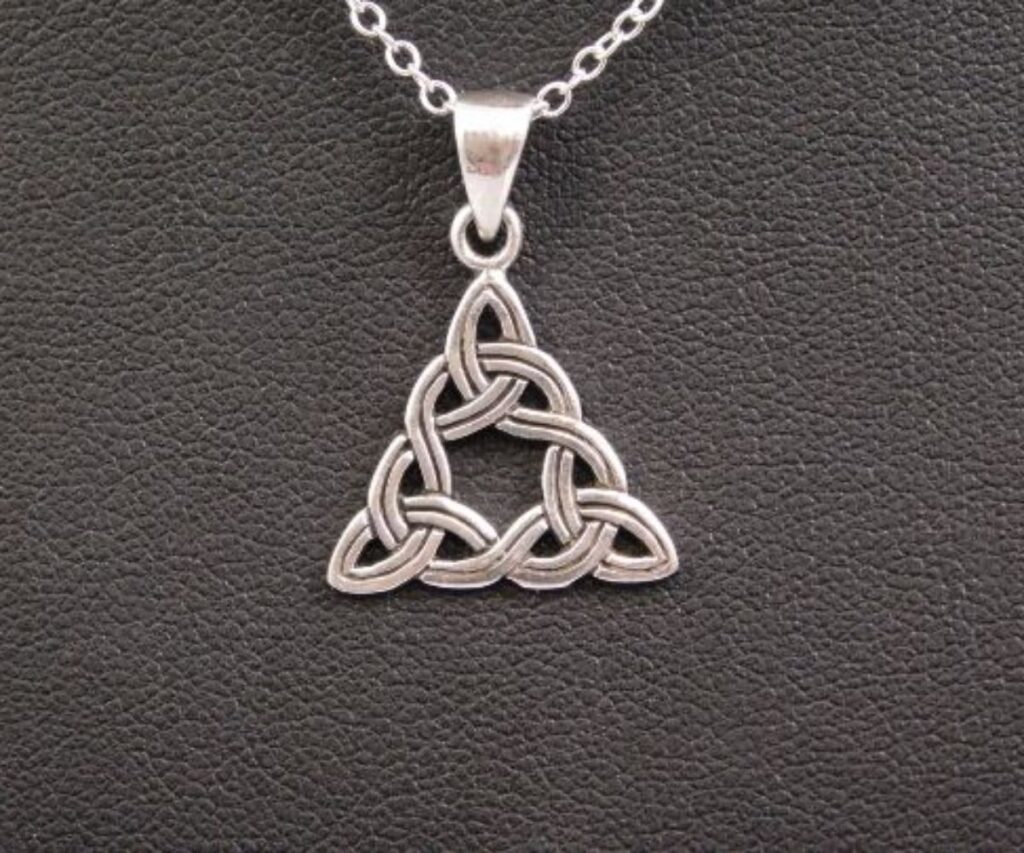
The triquetra or trinity knot appears in Celtic Christian art and ancient pagan contexts. This three-part symbol represents unity and spiritual balance. Irish monks incorporated it into illuminated manuscripts alongside Christian symbolism.
Modern pagan practitioners use the triquetra to represent the Triple Goddess or three realms of existence. Gothic Celtic enthusiasts appreciate its ancient origins and spiritual significance. The symbol appears in gothic jewelry and Celtic revival artwork.
18. Pentacle: Wiccan Protection and Elements
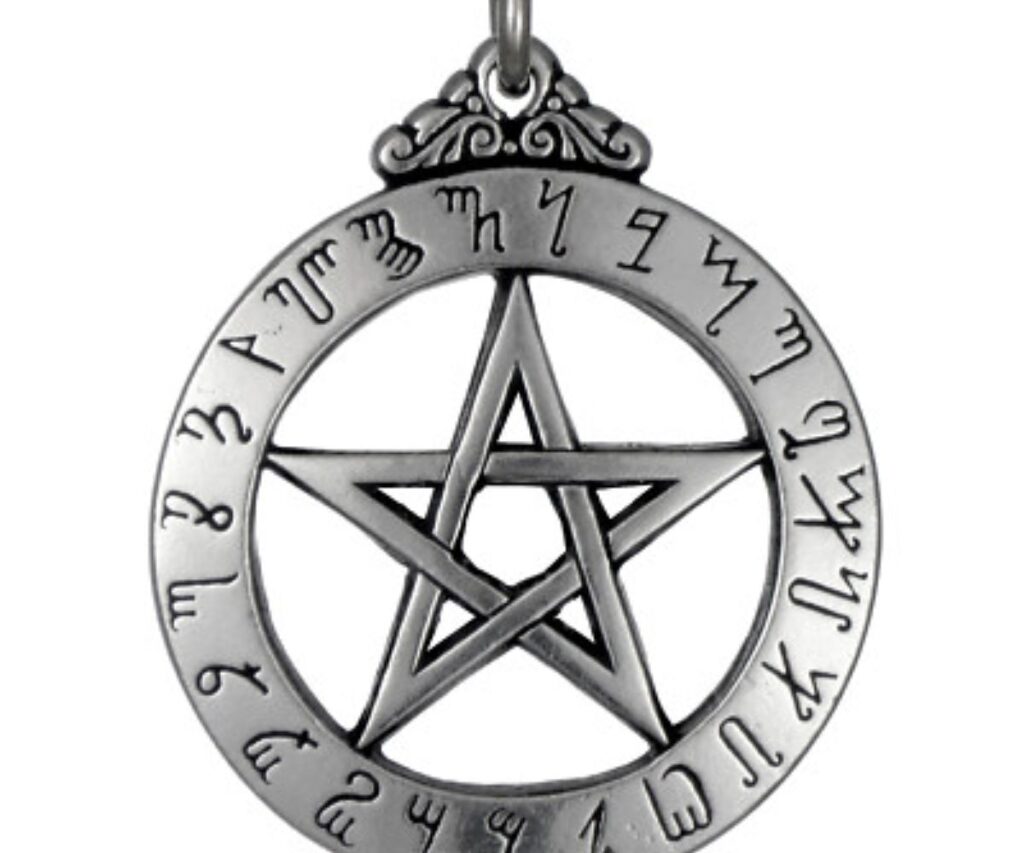
The Wiccan pentacle serves as the primary protective symbol in modern witchcraft. Each point represents one of the five elements, with spirit at the top governing the four material elements. The surrounding circle provides spiritual protection and contains the symbol’s energy.
Gothic Wiccan practitioners wear pentacle jewelry to identify with pagan traditions and seek spiritual protection. The symbol’s ancient origins span multiple cultures and religious traditions. Alternative fashion often incorporates pentacle designs in gothic jewelry and accessories.
19. Hecate’s Wheel: Crossroads and Magic
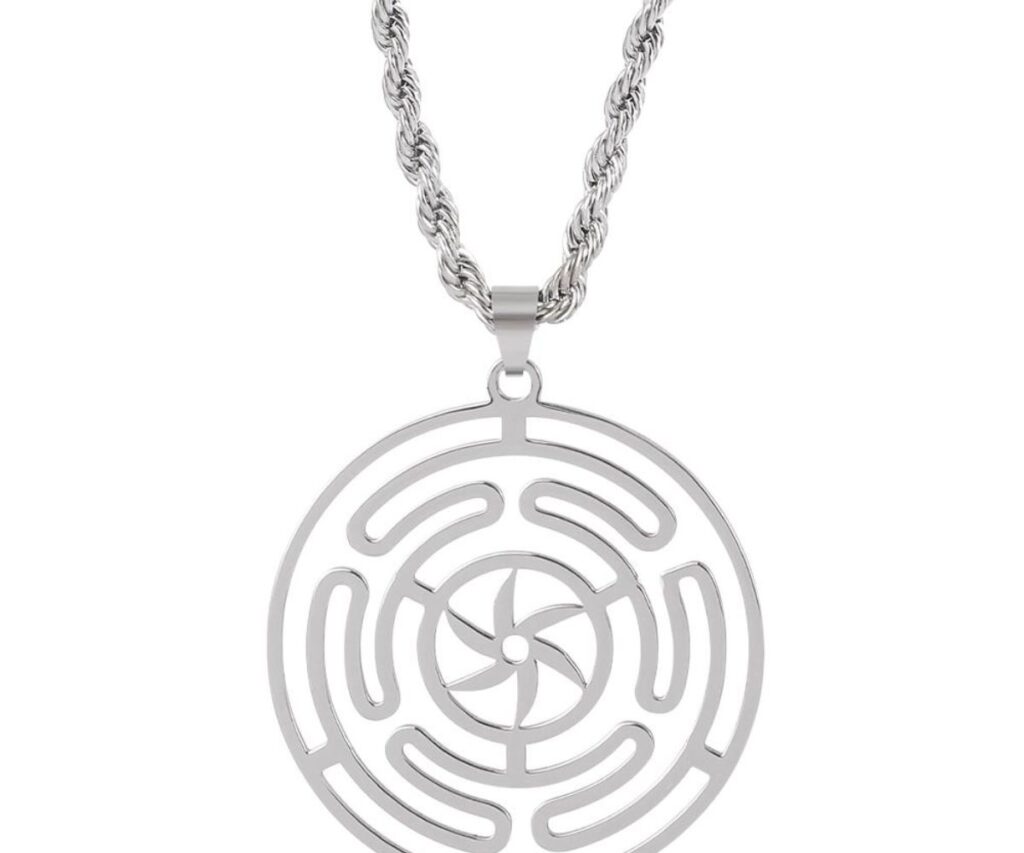
Hecate’s wheel represents the Greek goddess of magic, crossroads, and the underworld. This three-part symbol shows Hecate’s power over past, present, and future. Ancient Greeks honored her at three-way crossroads with ritual offerings.
Modern witchcraft traditions invoke Hecate for protection, divination, and magical work. Gothic practitioners connect with her dark goddess energy and mystical wisdom. The symbol appears in occult jewelry and ritual implements.
20. Mjolnir (Thor’s Hammer): Norse Power and Protection
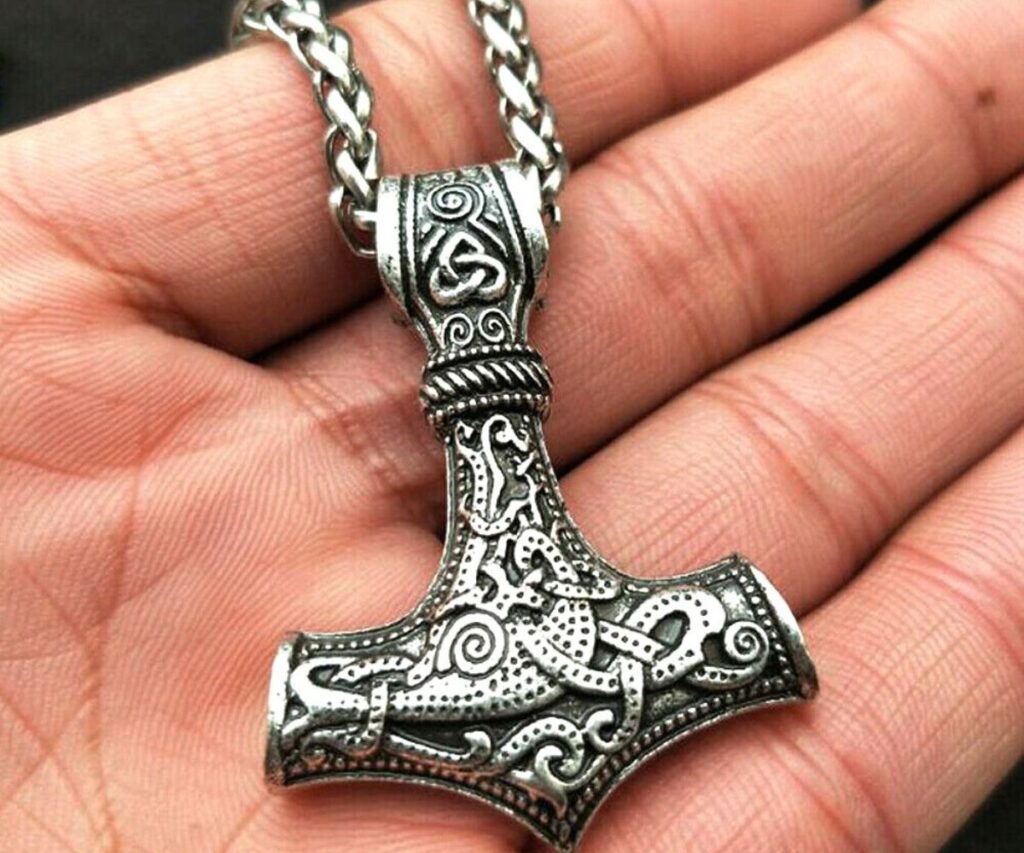
Thor’s hammer Mjolnir provides protection and strength in Norse mythology. Viking warriors wore hammer pendants for spiritual protection in battle. The symbol represents divine power, fertility, and sacred marriage ceremonies.
Modern heathen traditions revive Norse symbolism and spiritual practices. Gothic enthusiasts appreciate Viking warrior culture and Norse mythology‘s dark themes. Mjolnir appears in gothic jewelry and Norse revival artwork.
Death, Darkness, and Transformation Symbols
Death imagery pervades goth symbols not from morbid fascination but philosophical acceptance of mortality. These memento mori symbols celebrate life’s precious nature by acknowledging its temporary quality. Victorian era mourning culture heavily influenced modern gothic aesthetics and symbolism.
Transformation through darkness becomes a central theme where death symbols represent rebirth, change, and spiritual evolution. Gothic subculture embraces death imagery as a reminder to live authentically and meaningfully. These symbols appear throughout gothic fashion, tattoo symbolism, and artistic expression.
21. Skulls and Crossbones: Mortality and Pirate Heritage
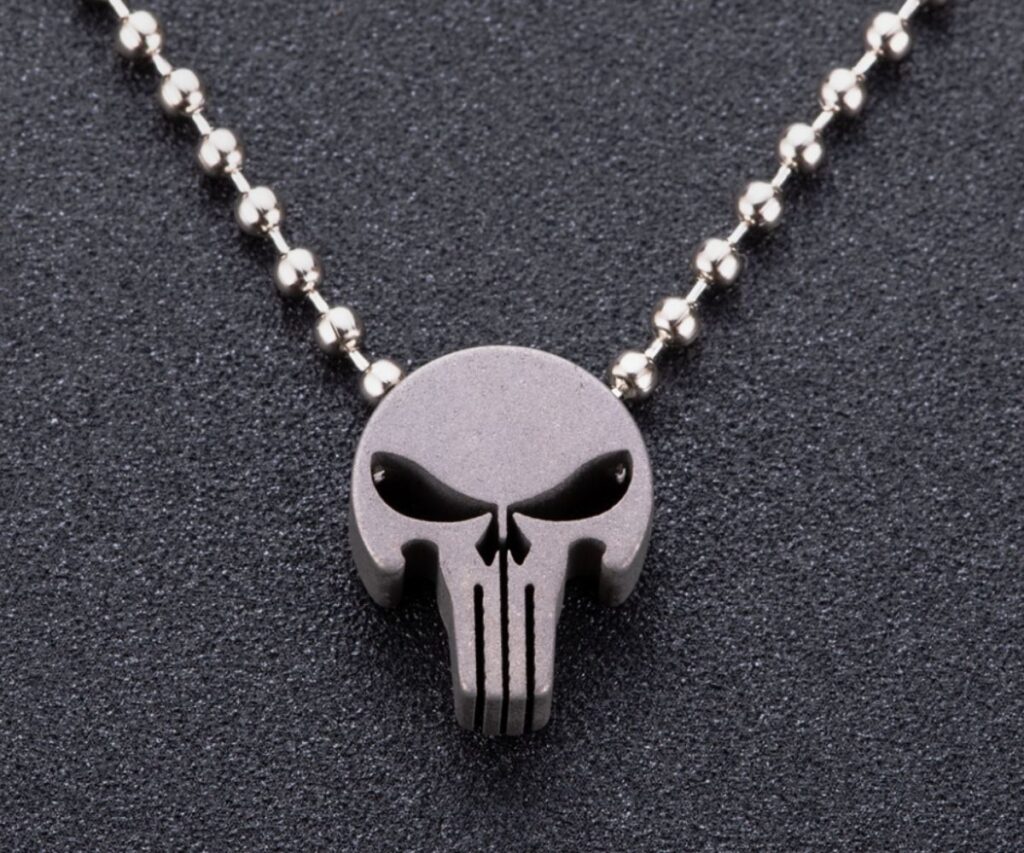
Skulls serve as universal memento mori symbols reminding us of life’s fragility. Medieval churches displayed skull imagery to encourage spiritual contemplation. Pirate flags popularized the skull and crossbones combination as symbols of danger and rebellion.
Gothic fashion extensively uses skull imagery in jewelry design, black clothing, and accessories. Hamlet’s famous skull scene in Shakespeare’s play reinforced cultural associations between skulls and philosophical contemplation. Modern gothic practitioners wear skull symbols to embrace mortality and live without fear.
22. Ravens and Crows: Messengers Between Worlds
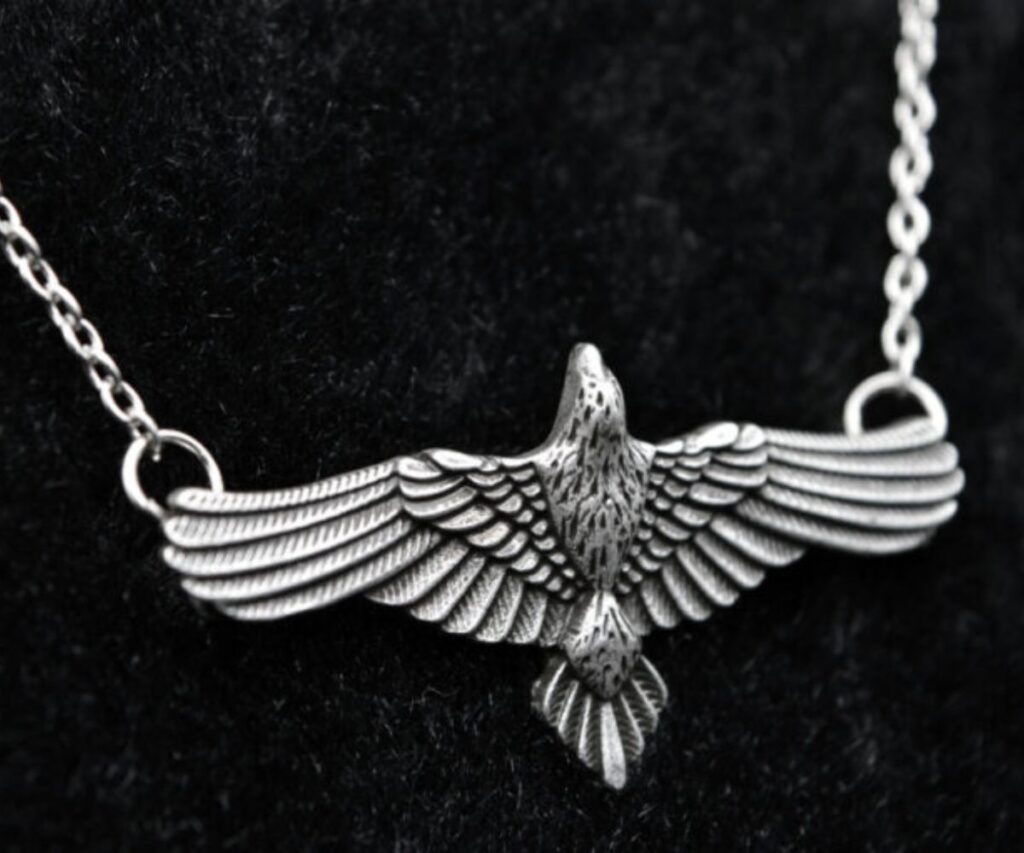
Ravens and crows appear in mythology worldwide as messengers between the living and dead. Norse mythology describes Odin’s ravens Huginn and Muninn bringing him information from all nine worlds. Celtic traditions associate crows with the Morrigan, a powerful war goddess.
Edgar Allan Poe’s famous poem “The Raven” cemented these birds’ association with dark romantic literature. Gothic culture embraces ravens as symbols of wisdom, mysticism, and connection to otherworldly realms. The birds appear in gothic artwork, tattoo symbolism, and alternative fashion.
23. Black Roses: Gothic Romance and Dark Beauty
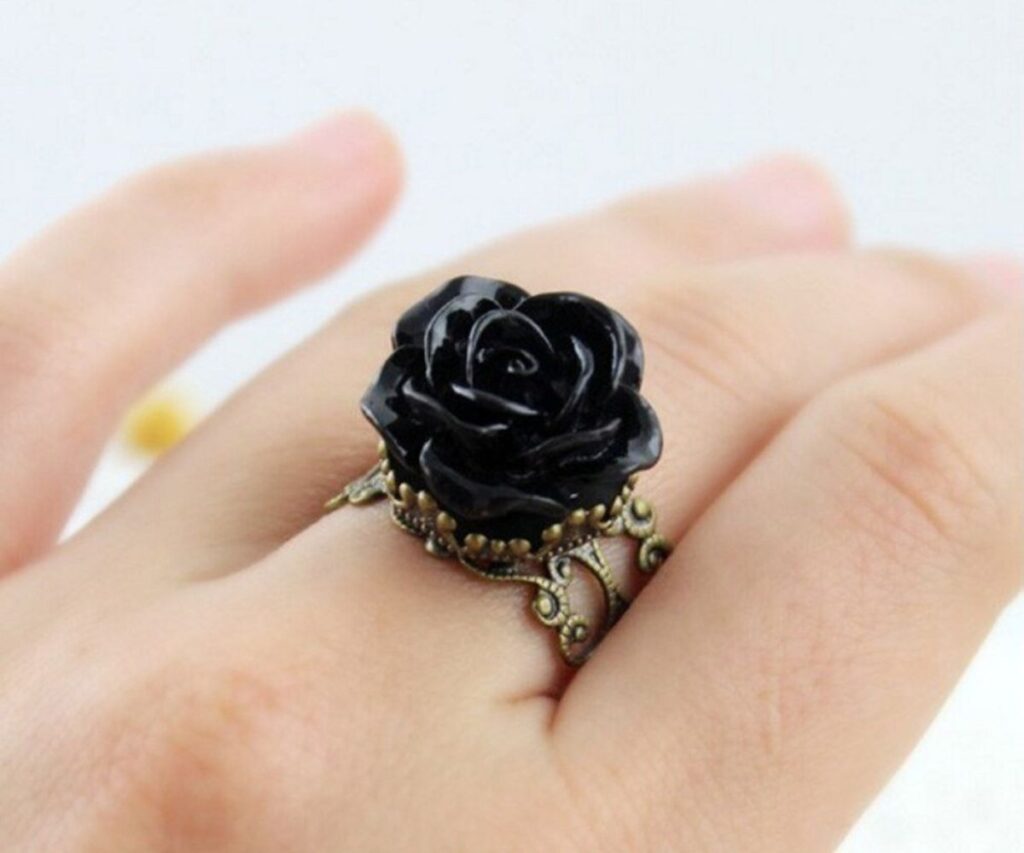
Black roses represent impossible love and tragic romantic themes in gothic culture. Natural black roses don’t exist, making them symbols of unattainable desires and forbidden relationships. Victorian mourning jewelry sometimes featured black floral imagery.
Gothic romance literature popularized black rose symbolism in dark love stories. Sisters of Mercy’s “Vision Thing” album and other gothic music reference black roses as symbols of beautiful suffering. These flowers appear in gothic jewelry, tattoo symbolism, and romantic artwork.
24. Coffins and Tombstones: Memento Mori Culture
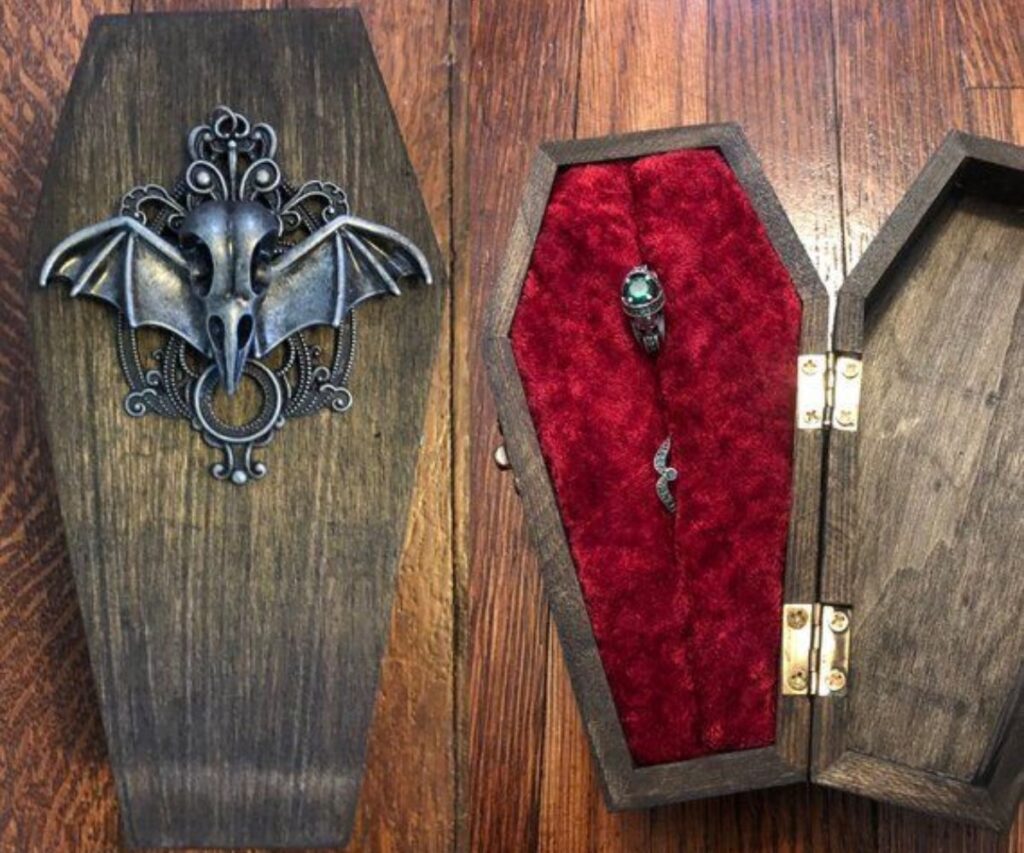
Coffins and tombstones represent the ultimate memento mori – remember death. Victorian era mourning culture created elaborate cemetery art and funeral customs that influence gothic aesthetics today. Gothic Revival architecture emphasized medieval death imagery.
Modern gothic culture incorporates coffin imagery into fashion, jewelry design, and home decor. Horror movies popularized coffin symbolism in popular culture. Gothic practitioners use these symbols to contemplate mortality and embrace life’s temporary nature.
25. Bat Wings: Night Creatures and Vampiric Imagery
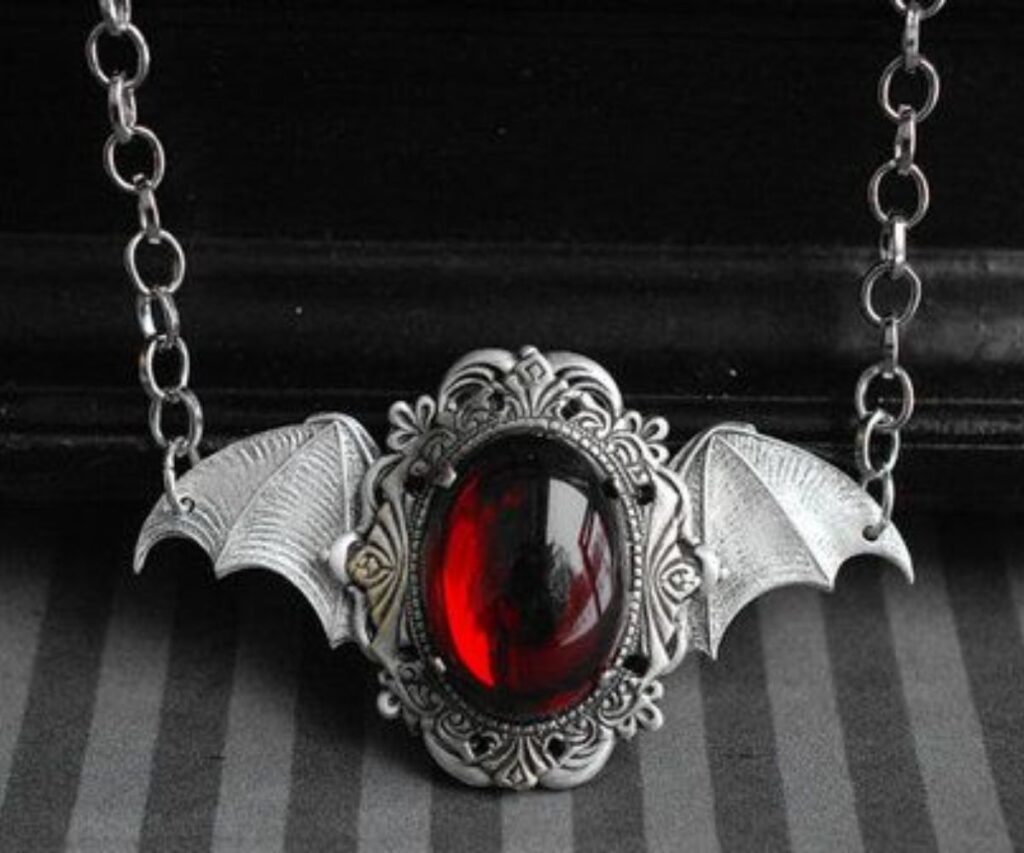
Bats symbolize nocturnal power and vampiric imagery in gothic culture. These creatures navigate darkness using echolocation, representing mystical abilities and otherworldly perception. Vampire literature transformed bats from natural creatures into supernatural symbols.
Bram Stoker’s Dracula established the connection between bats and vampires in popular culture. Gothic fashion incorporates bat wing imagery in jewelry design, black clothing, and accessories. The creatures represent transformation, nocturnal wisdom, and comfort with darkness.
Tarot and Divination Symbols in Gothic Culture
Tarot symbolism merges divination practices with gothic aesthetics perfectly. These mystical cards reveal hidden truths through archetypal imagery that resonates with dark romantic themes. Rider-Waite deck imagery influences gothic art and spiritual practices worldwide.
Major Arcana cards contain profound symbolic meaning that appeals to gothic sensibilities. Tarot divination offers guidance and spiritual insight for those exploring alternative spirituality. Many gothic practitioners use tarot for personal growth and mystical exploration.
The Death Card: Transformation, Not Destruction
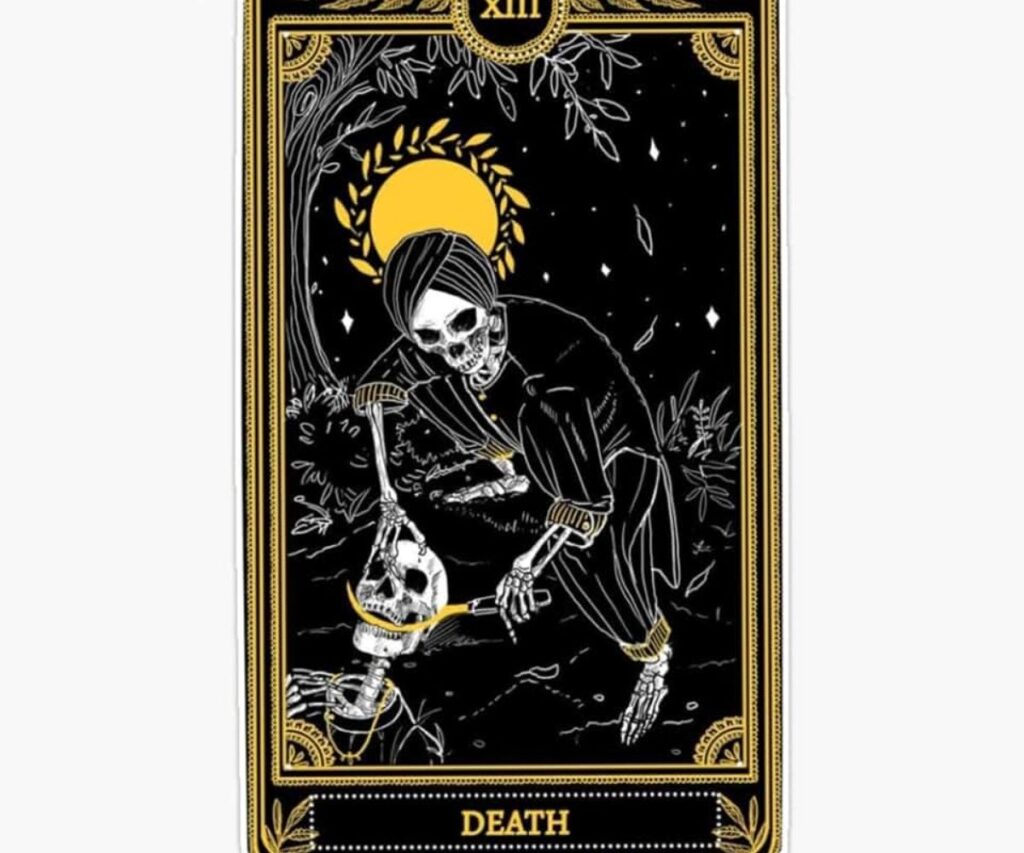
The Death tarot card represents transformation and new beginnings rather than literal death. This Major Arcana card shows a skeleton knight bringing necessary change and spiritual renewal. Tarot readers emphasize the card’s positive transformation meaning.
Gothic fashion frequently features Death card imagery because it represents empowerment through change. The card’s symbolism appeals to those embracing personal transformation and spiritual growth. Gothic jewelry often incorporates Death card designs and imagery.
The High Priestess: Intuition and Hidden Knowledge
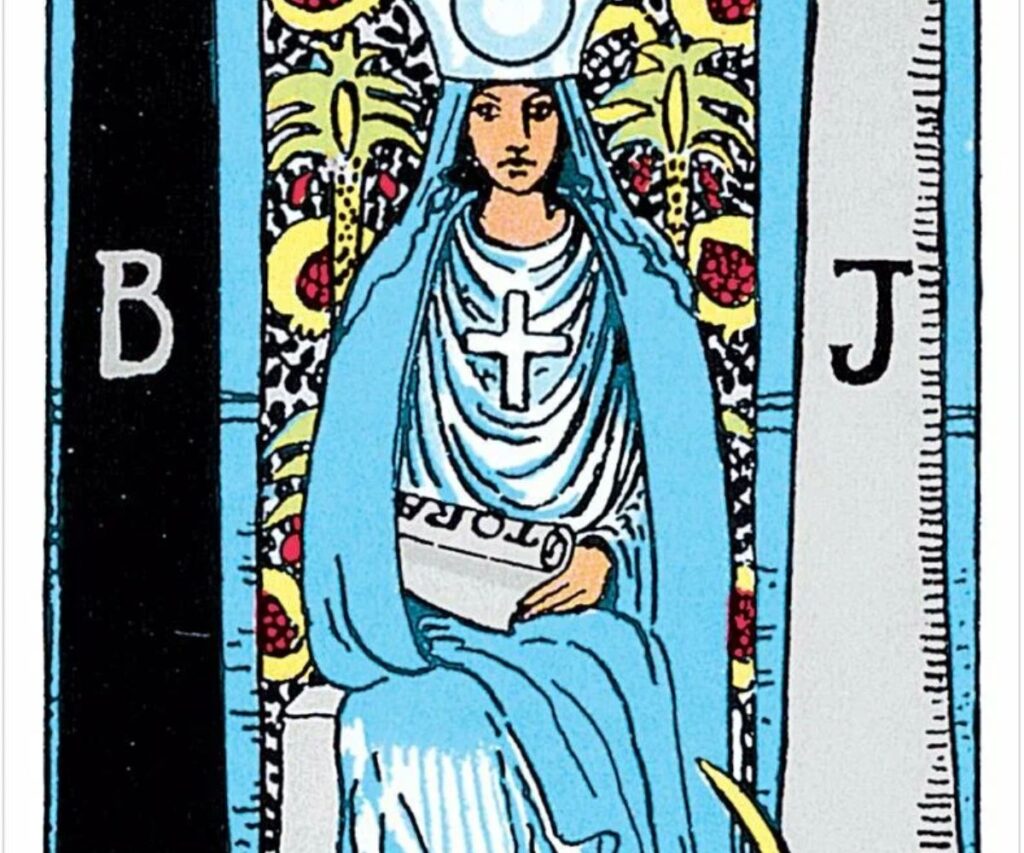
The High Priestess represents intuitive wisdom and arcane knowledge in tarot symbolism. This Major Arcana card shows a woman seated between pillars, guarding mystical secrets. She represents the divine feminine and spiritual authority.
Gothic spirituality embraces The High Priestess as a symbol of feminine mystical power. The card encourages trust in intuition and inner guidance. Gothic practitioners connect with her mysterious energy and occult wisdom.
The Devil: Material Bondage and Temptation
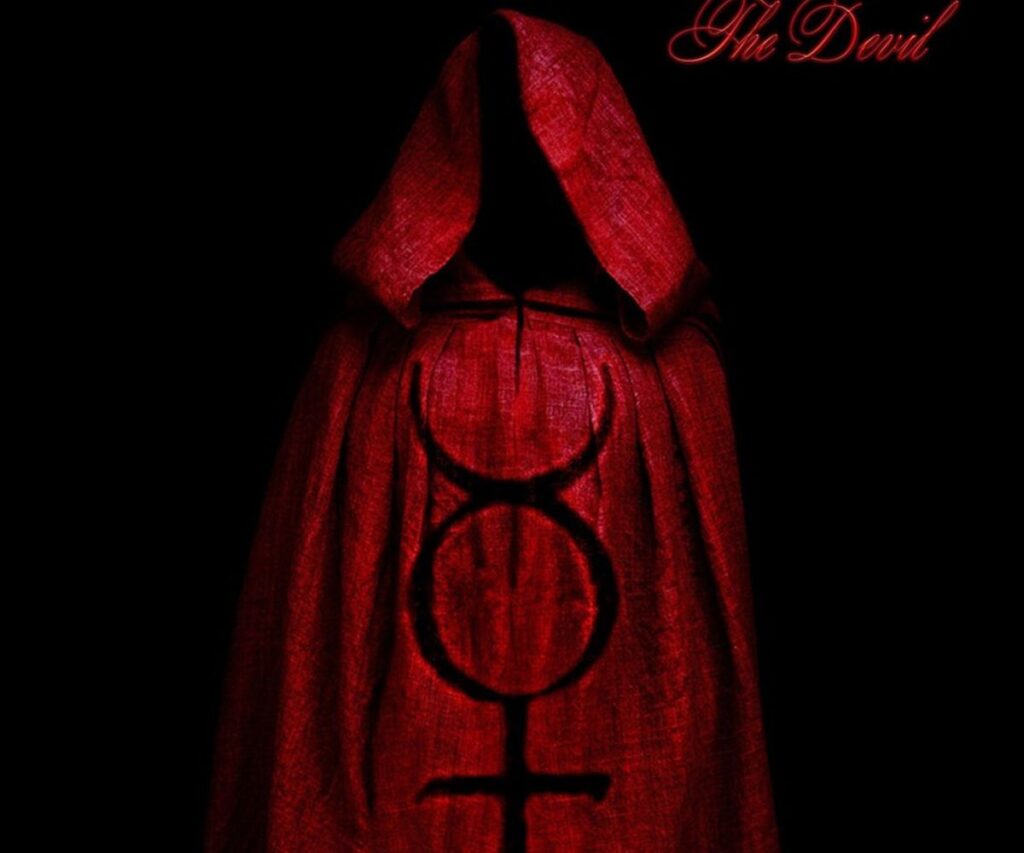
The Devil tarot card represents material bondage and addiction rather than evil forces. This Major Arcana card shows figures chained by their own choices and desires. The card’s reversed meaning suggests liberation and breaking free from limitations.
Gothic occult practitioners appreciate The Devil card’s complex symbolism about personal freedom. The card addresses shadow work and confronting inner demons. Gothic spirituality often explores dark themes for personal growth and empowerment.
The Tower: Sudden Change and Revelation
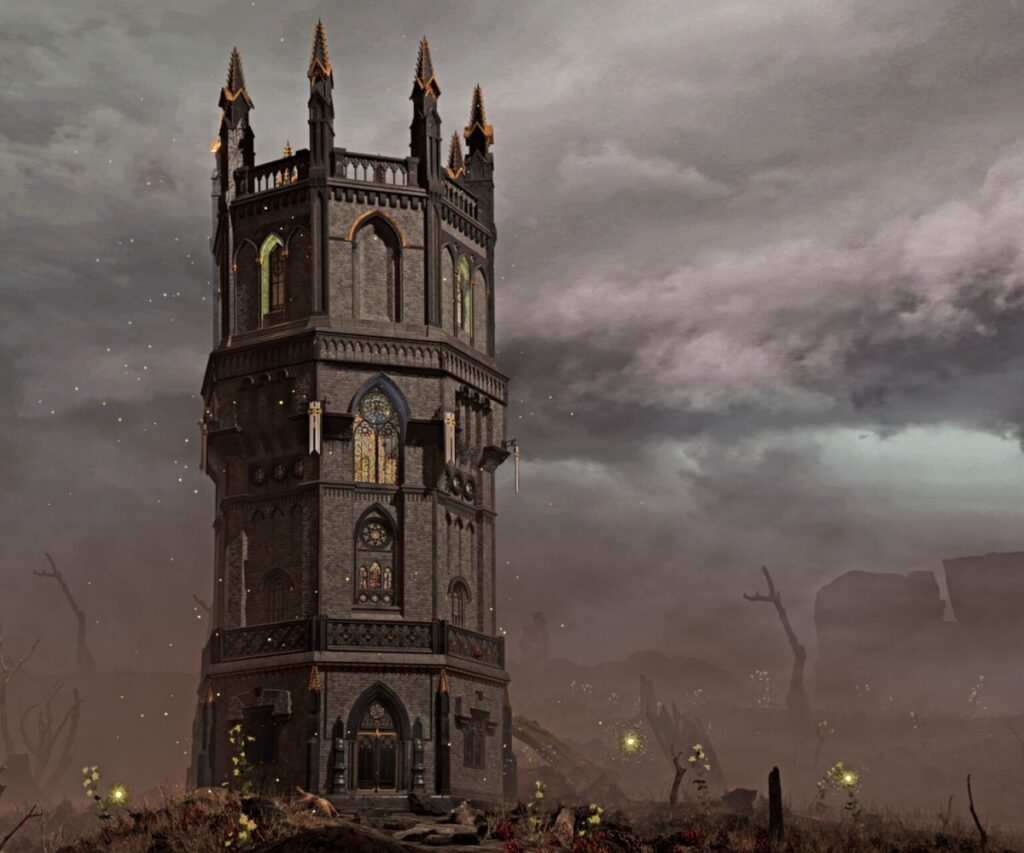
The Tower card represents sudden revelation and necessary destruction of false foundations. This Major Arcana card shows a tower struck by lightning, symbolizing divine intervention and spiritual awakening. The card indicates breakthrough moments and transformation.
Gothic tarot enthusiasts connect with The Tower’s dramatic imagery and transformational meaning. The card represents empowerment through crisis and spiritual enlightenment. Gothic practitioners often experience Tower moments during personal growth.
The Moon: Illusion and Subconscious
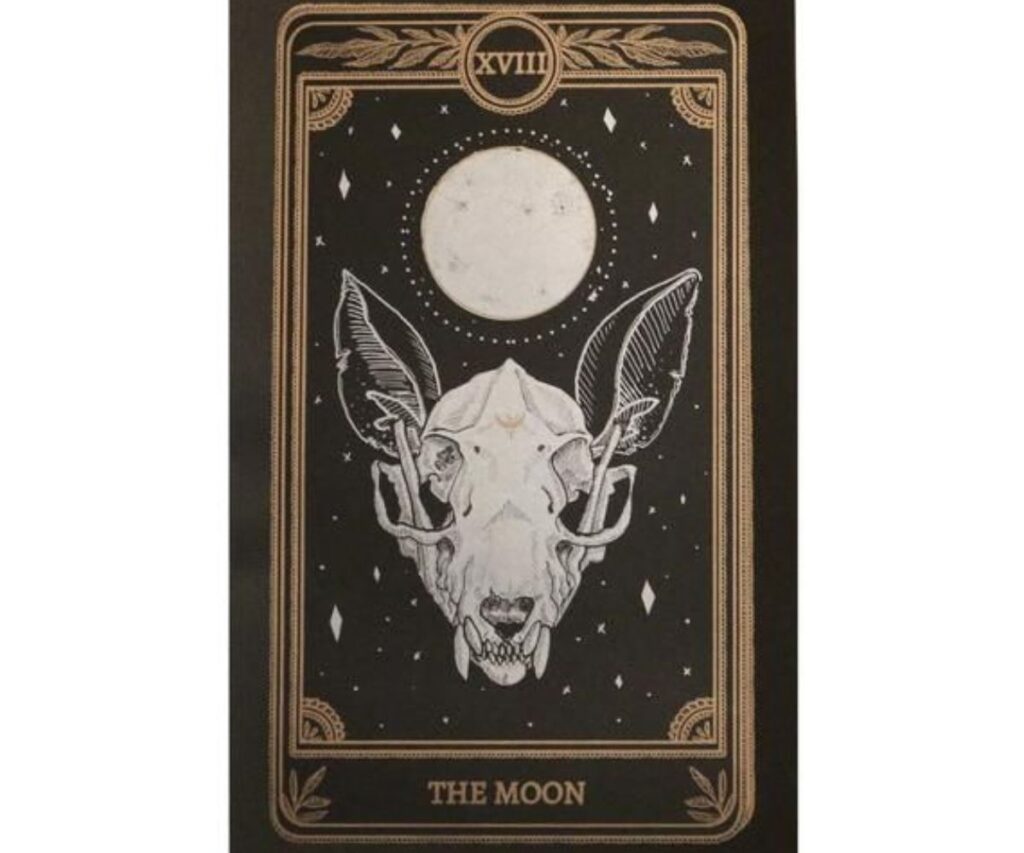
The Moon tarot card represents illusion, subconscious wisdom, and psychic intuition. This Major Arcana card shows a full moon illuminating a path between two towers. The card suggests mystical insights and hidden knowledge.
Gothic spirituality embraces The Moon card’s mysterious and nocturnal themes. The card represents feminine mystical power and lunar spirituality. Gothic practitioners often work with moon phases and lunar energy in spiritual practice.
| Tarot Card | Symbolic Meaning | Gothic Appeal |
|---|---|---|
| Death | Transformation, renewal | Change empowerment, spiritual growth |
| High Priestess | Intuition, arcane knowledge | Feminine mystical power, occult wisdom |
| The Devil | Material bondage, liberation | Shadow work, personal freedom |
| The Tower | Sudden change, revelation | Dramatic transformation, breakthrough |
| The Moon | Illusion, subconscious wisdom | Nocturnal themes, psychic intuition |
Astrological and Celestial Dark Symbols
Celestial dark symbols connect gothic culture with cosmic forces and lunar mysteries. These astrological symbols channel planetary energies and ancient astronomical wisdom. Medieval occult traditions associated planets with specific magical properties and spiritual influences.
Astronomical imagery provides goth symbols with scientific mysticism that blends ancient astrology with contemporary spiritual practices. Gothic practitioners often study astrology for personal insight and spiritual guidance. These symbols appear in gothic jewelry, tattoo symbolism, and occult artwork.
Saturn Symbol: Time, Discipline, and Melancholy
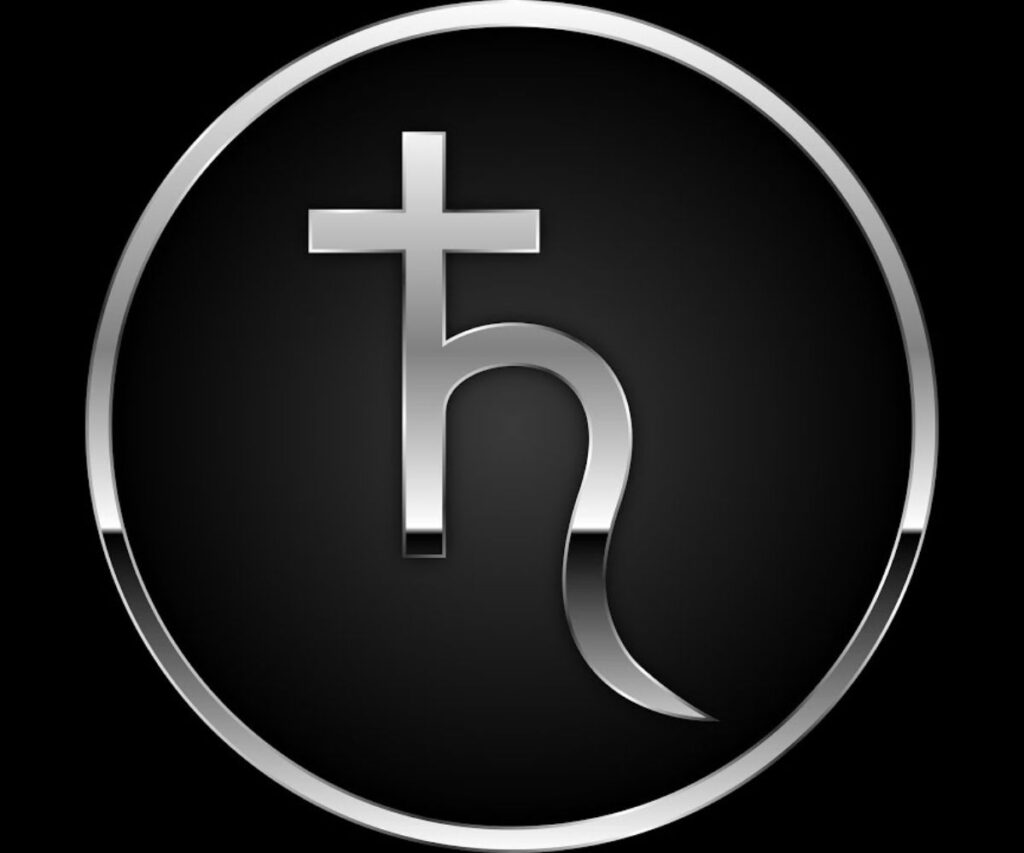
Saturn represents time, discipline, and melancholy in astrological tradition. Ancient mythology associated Saturn with Kronos, the titan who devoured his children to prevent their rise to power. The planet’s slow orbit creates associations with patience and spiritual transformation.
Gothic practitioners connect with Saturn’s melancholy energy and philosophical depth. The planet represents wisdom gained through suffering and spiritual discipline. Gothic jewelry often features Saturn symbols for those embracing serious spiritual work.
Moon Phases: Lunar Cycles and Feminine Power
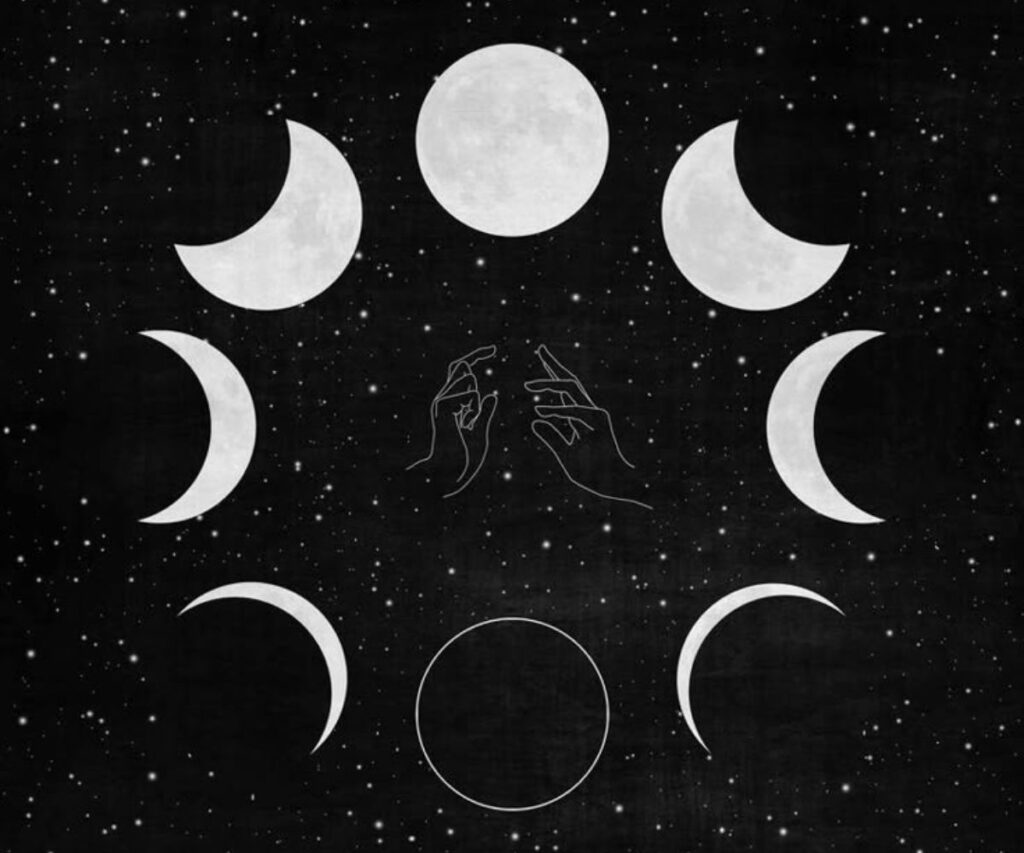
Moon phases represent feminine energy and natural cycles in spiritual traditions worldwide. The lunar cycle influences mystical practices, ritual timing, and feminine spirituality. Werewolf mythology and witchcraft traditions emphasize lunar connections.
Gothic spirituality often incorporates moon phase work into spiritual practice. Triple Goddess symbolism connects to lunar cycles of maiden, mother, and crone. Gothic jewelry frequently features moon phase designs and lunar imagery.
Black Sun: Occult Solar Symbolism
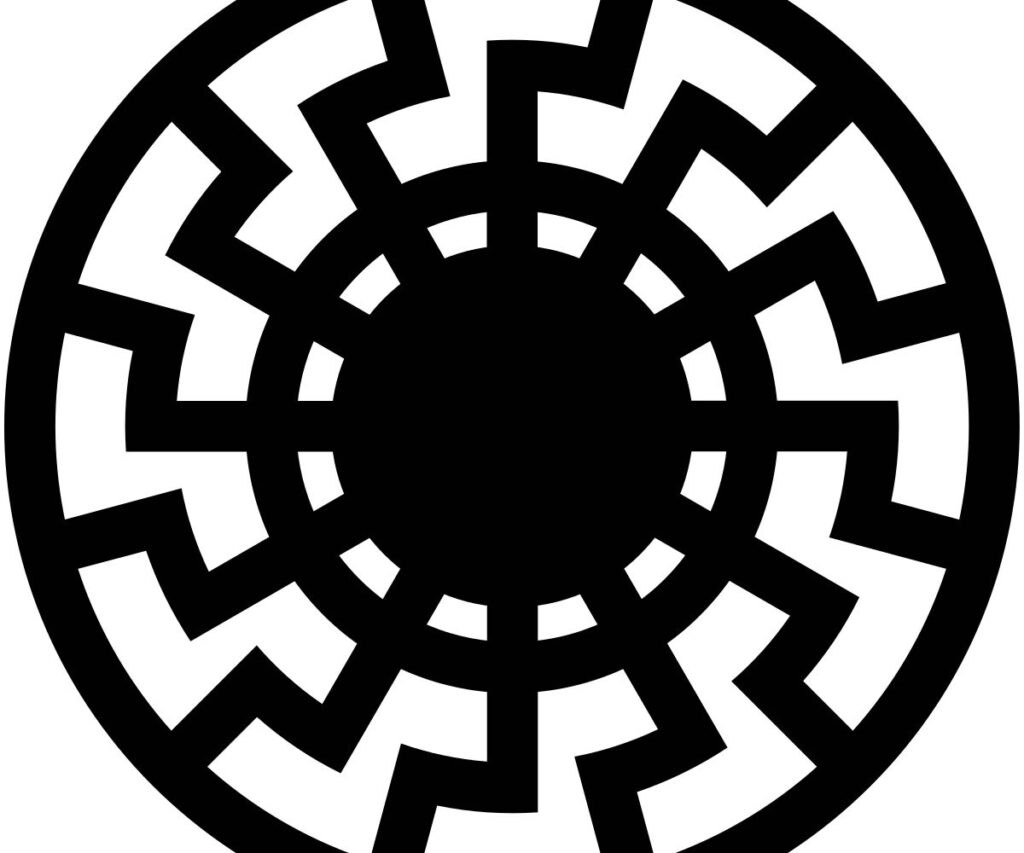
The Black Sun represents alchemical nigredo – the dark phase of spiritual transformation. This occult solar symbol appears in medieval alchemical texts as the beginning of the Great Work. Renaissance occult traditions used it to represent spiritual darkness before enlightenment.
Gothic occult practitioners embrace Black Sun symbolism for shadow work and spiritual transformation. The symbol represents necessary darkness and inner work. Alternative spirituality incorporates Black Sun imagery in ritual and meditative practices.
Planetary Sigils: Mercury, Venus, Mars in Gothic Context
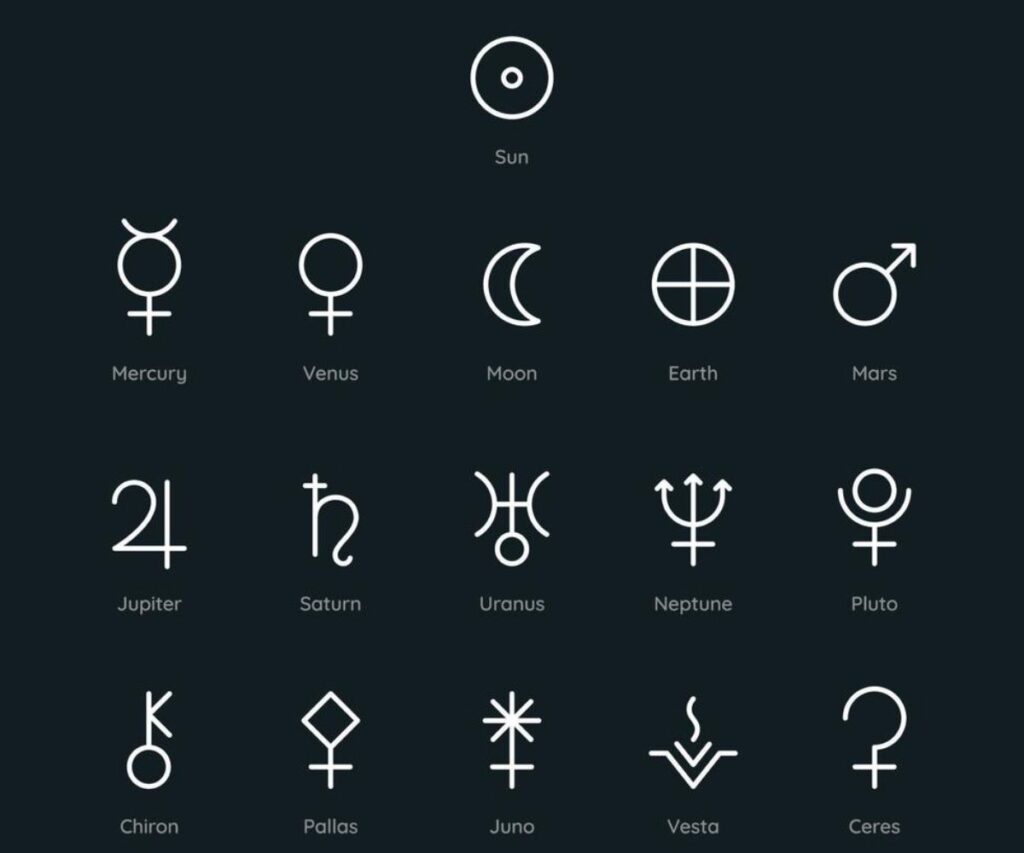
Planetary sigils represent celestial energies in magical traditions. Mercury governs communication and mystical knowledge. Venus rules love, beauty, and artistic expression. Mars represents warrior energy and protective power.
Gothic occult practitioners use planetary sigils in magical work and spiritual practice. Astrological correspondences help determine ritual timing and magical focus. Gothic jewelry incorporates planetary symbols for their mystical significance and aesthetic appeal.
Modern Gothic and Industrial Symbols
Contemporary industrial symbols merge technology with gothic aesthetics in unique ways. These modern dark symbols reflect dystopian futures and technological anxiety. Post-apocalyptic imagery creates new goth symbols for the digital age.
Cyberpunk and steampunk influences combine traditional darkness with futuristic themes. Industrial music and electronic culture contribute to modern gothic symbolism. These symbols appear in alternative fashion, gothic jewelry, and contemporary art.
Biohazard Symbol: Post-Apocalyptic Aesthetics
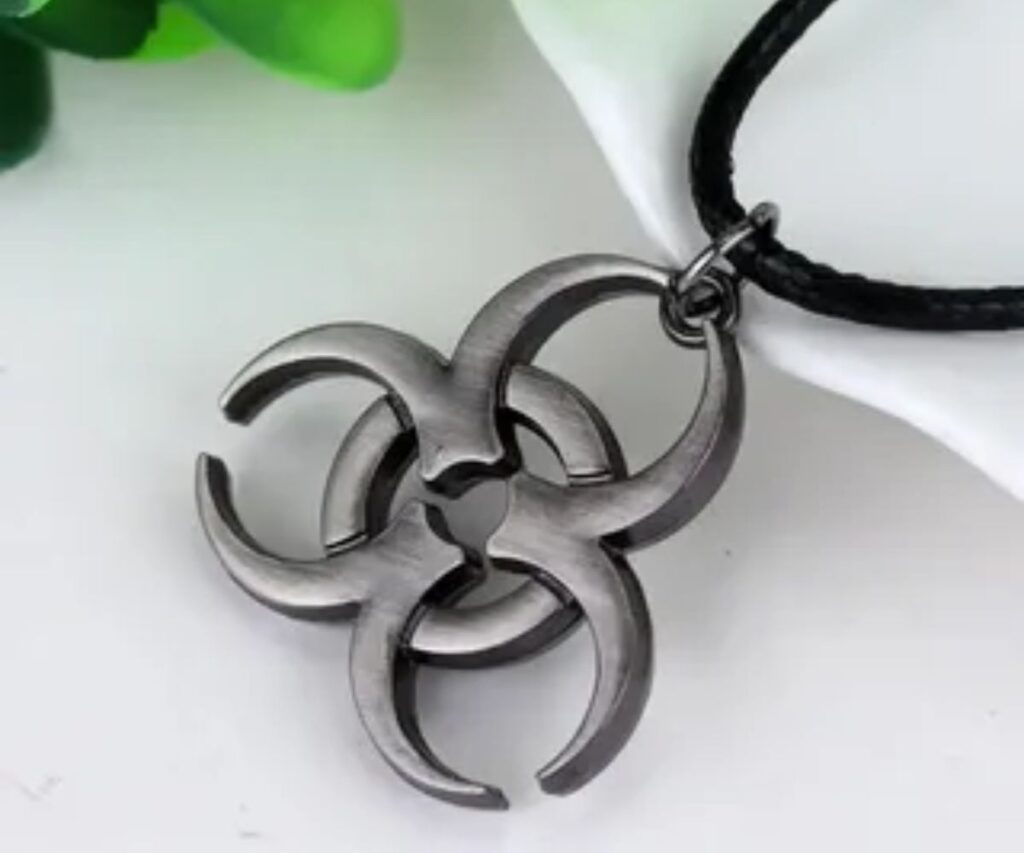
The biohazard symbol originated as a scientific warning for dangerous biological materials. Cyberpunk culture adopted it as a symbol of dystopian futures and technological danger. Post-apocalyptic fiction popularized biohazard imagery in alternative culture.
Industrial gothic fashion incorporates biohazard symbols for their dystopian aesthetic appeal. The symbol represents modern anxieties about technology and environmental destruction. Gothic practitioners use it to express concerns about contemporary society.
Anarchy Symbol: Rebellion and Anti-Authority
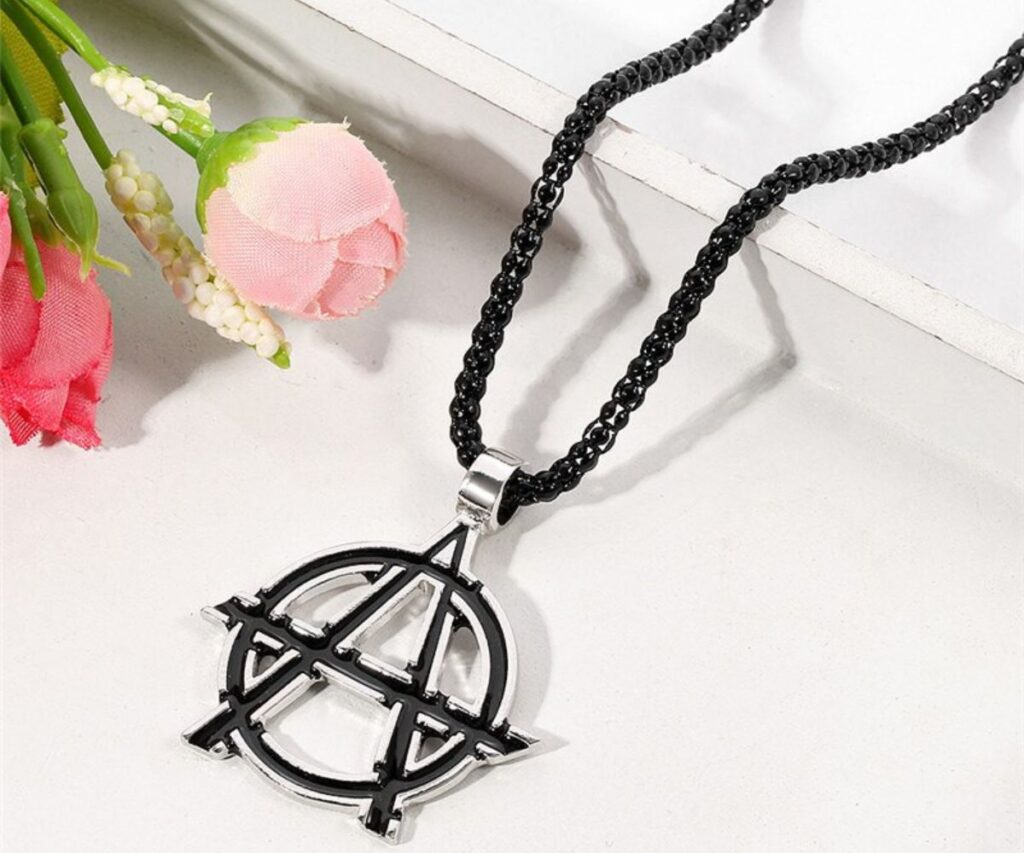
The anarchy symbol represents political rebellion and anti-authority sentiment. Punk culture popularized the circle-A symbol as a statement against oppressive systems. Gothic punk traditions maintain this rebellious spirit.
Alternative fashion uses anarchy symbols to express political views and individualism. Gothic culture values personal freedom and resistance to conformity. The symbol appears in gothic jewelry and punk fashion accessories.
Chaos Star: Eight-Pointed Star of Disorder
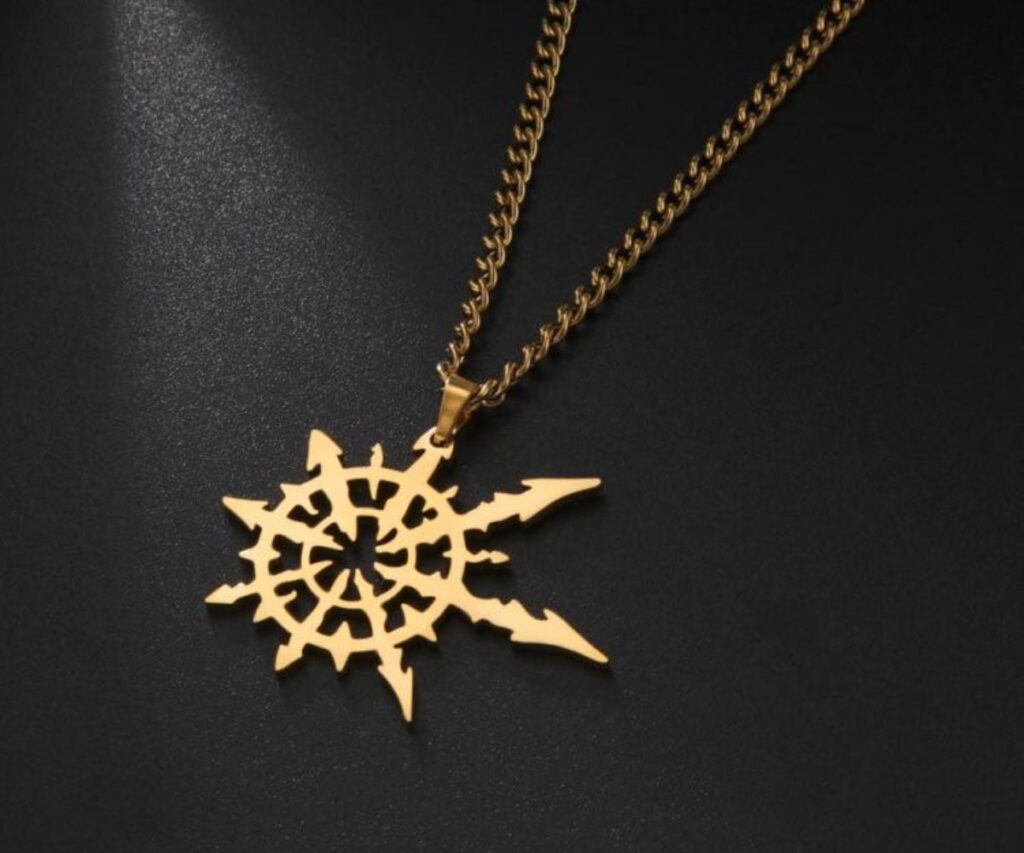
The Chaos Star originated in Michael Moorcock’s fantasy novels as a symbol of cosmic balance through disorder. Chaos magic traditions adopted it as a symbol of mystical flexibility and spiritual empowerment. The eight points represent infinite possibilities.
Gothic occult practitioners appreciate Chaos magic’s individualistic approach to spirituality. The Chaos Star represents freedom from dogmatic religious systems. Alternative spirituality embraces chaos as a creative force.
Gear and Clockwork: Steampunk Gothic Elements
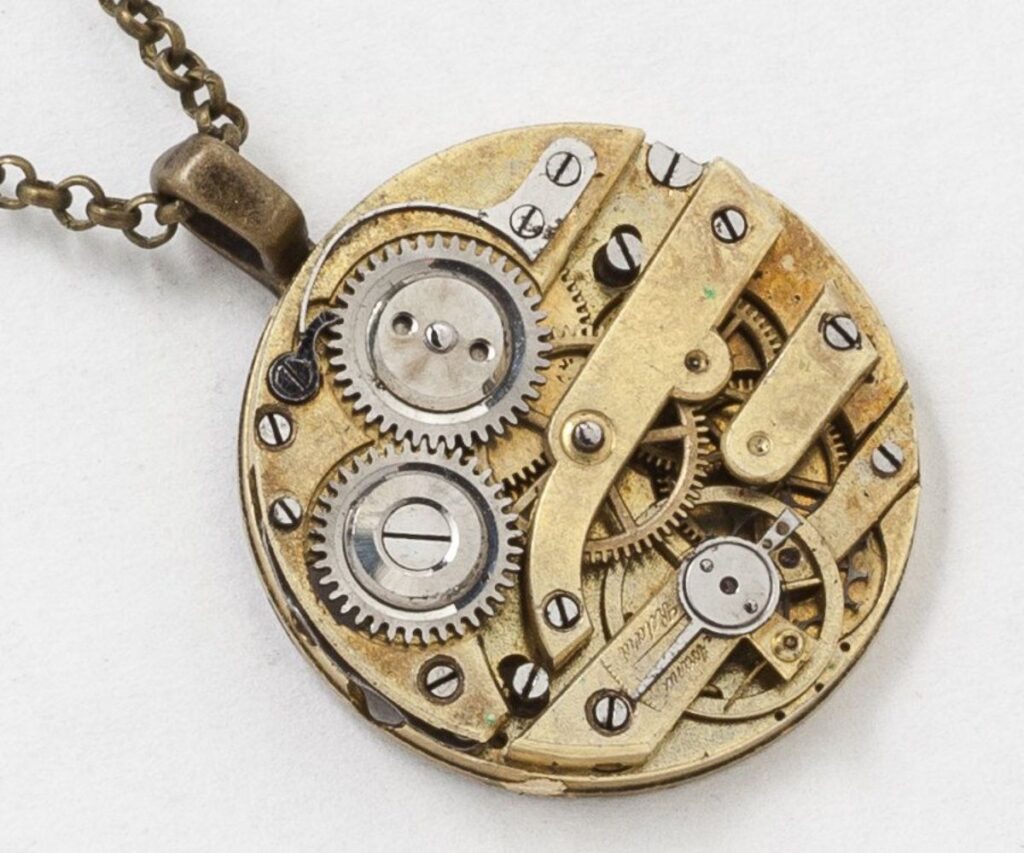
Steampunk symbols merge Victorian technology with gothic aesthetics. Clockwork imagery represents mechanical beauty and industrial romance. Gear symbols connect to steampunk’s alternative Victorian fantasy.
Gothic steampunk fashion incorporates mechanical elements into dark romantic styles. Clockwork jewelry and accessories blend Victorian elegance with industrial power. These symbols represent technological mysticism and mechanical spirituality.
Conclusion
This comprehensive exploration of goth symbols reveals their profound cultural significance beyond surface aesthetics. These dark symbols connect modern practitioners with ancient wisdom, spiritual traditions, and mystical knowledge. From Egyptian mysteries to industrial futures, gothic symbolism bridges past and present.
Whether you’re drawn to occult traditions, religious rebellion, or mystical spirituality, these 25+ gothic symbols offer personal empowerment and community connection. Each symbol carries layers of meaning that evolve with cultural changes and individual interpretation. Gothic subculture continues to find new significance in ancient symbols while creating modern meanings for contemporary challenges.
Goth symbols represent more than fashion statements – they express deep human needs for meaning, connection, and spiritual growth. These powerful symbols help practitioners navigate life’s mysteries with wisdom, courage, and authenticity.
Frequently Asked Questions About Goth Symbols
What is a Gothic symbol?
A Gothic symbol is a visual or literary representation that conveys dark, mysterious, or spiritual themes. Common symbols include crosses, ravens, skulls, and roses, all representing beauty in darkness or themes of life and death.
What are the symbols of Gothic art?
Gothic art often includes pointed arches, stained glass, grotesques, and religious icons. These symbols reflect spirituality, fear, and transcendence, tying emotion with the architectural drama of medieval cathedrals.
Why are ankhs goth?
The ankh, an ancient Egyptian symbol of eternal life, became popular in goth culture for its mystical and undead associations. It represents the goth fascination with mortality, spirituality, and ancient aesthetics.
What is symbolism in the Gothic genre?
Symbolism in Gothic literature and media uses objects, settings, or characters to express inner fears, death, or the supernatural. It helps create mood and deeper meaning beneath the eerie surface.
Why is it called Gothic?
The term “Gothic” was originally used to describe a medieval architectural style. It later evolved to label dark, romantic, and horror-inspired art and literature, reflecting emotional extremes and the grotesque.
What defines Gothic elements?
Gothic elements include mystery, decay, horror, the supernatural, and dark romanticism. These features are found in stories, art, and fashion that evoke eerie beauty and emotional intensity.
What is the symbolism in the horror genre?
Horror symbolism often involves darkness, blood, shadows, and monsters to represent inner fears, trauma, or societal anxieties. It’s used to explore what humans dread most—both physically and psychologically.
What is the symbol of Gothic architecture?
The pointed arch is the most iconic symbol of Gothic architecture, symbolizing aspiration toward the heavens. Other symbols like gargoyles and stained glass portray spiritual protection and divine light.
What is meant by symbolism in literature?
Symbolism in literature is when objects, characters, or settings represent abstract ideas or deeper meanings. It enriches the story by connecting emotional or philosophical themes with visual cues.
What is the theme of symbolism?
The theme of symbolism explores how deeper truths are revealed through imagery. It invites readers or viewers to interpret the hidden meanings behind what’s being portrayed on the surface.
What are the four elements of horror?
The four key elements of horror are fear, suspense, the supernatural, and the unknown. Together, they evoke emotional responses and create an unsettling atmosphere that defines the genre.
If you’re interested in Dark Academia, be sure to check out our Dark Academia: The Complete Guide to Dark Academia Clothing for Women to explore more unique and dark options!


Great beat ! I wish to apprentice while you amend your website, how could i subscribe for a blog site?
The account aided me a acceptable deal. I had been tiny
bit acquainted of this your broadcast offered bright clear concept
You have made some good points there. I checked on the net
for more information about the issue and found most people will go along with your views on this web site.
Hi terrific website! Does running a blog like this take
a great deal of work? I’ve very little understanding of coding but I was hoping to start my own blog in the near future.
Anyhow, if you have any recommendations or tips
for new blog owners please share. I know this is off topic nevertheless I just had to ask.
Appreciate it!
I am regular visitor, how are you everybody? This article posted
at this web site is truly fastidious.